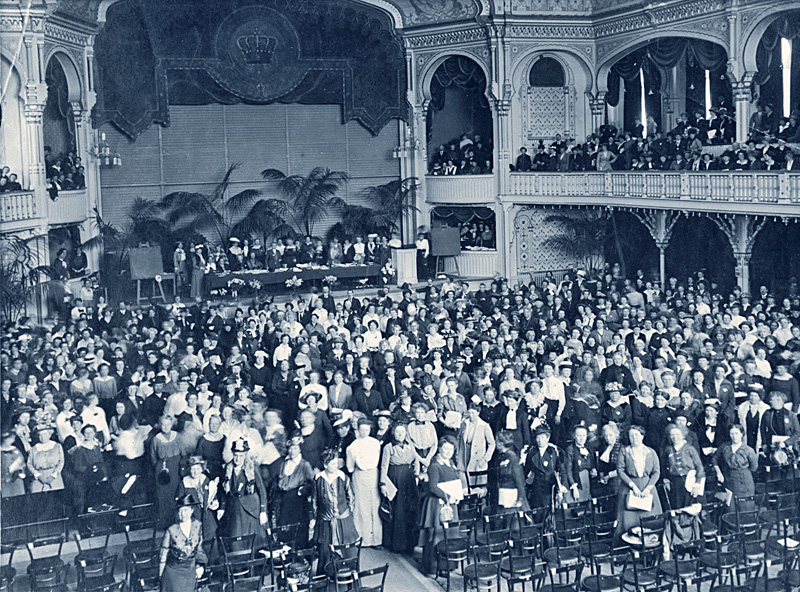
 |
|
WOMEN WORKING FOR PEACE IN |
||
MEN WHO SAID NO | ROAD TO CONSCRIPTION | CONSCIENTIOUS OBJECTION | PRISONS | SENTENCED TO DEATH | TRIBUNALS | CONTEXT | INDEX | SITE MAP |
||
| Back | ||
 |
||
INTRODUCTION |
Women's Peace Congress. Hague 1915 | |
|
By the time men began being conscripted many women were already engaged in protesting against the war and suggesting strategies to stop it. Indeed many had been campaigning against the drift to war since the previous century.
In World War 1, women were not conscripted to military service. But the contribution of women from all sections of society to the anti-war movement in WW1 deserves to be remembered. It was a woman who inspired the creation of the No Conscription Fellowship, and women who kept the NCF running when the young men who ran it were sent to prison as conscientious objectors. It was women from many countries including Britain who organised a Women’s International Congress for peace in 1915 in the Hague, leading to the formation of the Women’s International League for Peace and Freedom which has worked for peace for 100 years. Others created the Women’s Peace Crusade in 1916 in Glasgow which spread throughout the country. Women were involved in the creation of the Fellowship of Reconciliation, and in running the work of the Friends (Quaker) Service Committee. Many drew on their experience in the pre-war struggle for the right of women to vote. They risked imprisonment for their anti-war work, and some did serve prison terms for defying censorship, for publishing the Tribunal newspaper, and for speaking about peace. We include some of their stories, and pay tribute to the many whose names are unknown.
|
|
|